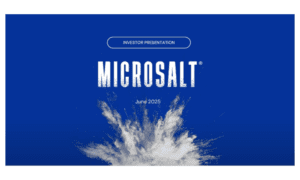Americans consume too much sodium, which leads to a variety of health issues. Educating consumers about the hazards of sodium and decreasing the amount of salt in processed foods are steps toward creating a low-sodium world.
Key takeaways:
- Most Americans consume too much sodium, which leads to high blood pressure and increased risk of stroke, heart disease, and some cancers.
- Creating a low-sodium world starts with educating people about the health effects of too much sodium.
- Creating solutions for low-sodium snacks will help contribute to low-sodium lifestyles.
High-sodium diets are commonplace in America, even after sodium consumption has been found to contribute to many different chronic health conditions. The challenge is that many people just don’t understand how much salt is lurking in the food they eat, especially when they’re eating out at restaurants. Overall, there simply isn’t enough awareness about sodium and the potential effects of consuming too much.
A low-sodium world would be one where everyone is educated about how much sodium they’re consuming, and they’re aware of all the negative health effects of a high-sodium diet. This knowledge, along with better options for tasty, low-sodium snacks, would help create a world where food manufacturers prioritize the health of their consumers, and consumers prioritize a healthy diet.
How much sodium is in our food?
First, it’s important to understand that sodium is a vital mineral that our bodies need to function properly. Sodium is involved in bodily processes relating to everything from balancing electrolytes to regulating fluids. And sodium is found naturally in many different foods, including even fruits and vegetables.
The problem is that Americans consume too much sodium in the form of added salt in food. According to the Centers for Disease Control and Prevention (CDC), 90% of Americans over two years old take in too much sodium, with an average daily sodium consumption of over 3,400 mg. (The recommended consumption is under 2,300 mg of sodium every day.) And around 70% of the sodium we eat comes from processed foods and restaurant meals.
All this extra sodium means that Americans have high blood pressure and an increased risk of stroke and heart attack. These risks decrease when people lower the amount of sodium in their diets.
However, many people don’t understand this correlation, especially when they don’t cook at home very much and rely on processed foods. The food industry doesn’t exactly broadcast the amount of sodium in its products or the negative health effects that sodium can cause. So the first step to creating a low-sodium world is to educate people about sodium.
Educating the world on sodium
Americans need to know more about sodium, including how much is in the foods we eat and what that’s doing to our bodies. It’s very hard to lower sodium intake, even when people want to, if they don’t know how much salt is in their restaurant meals.
People need additional information about sodium in general. For example, they may not understand the difference between salt and sodium. Salt is technically sodium chloride, which is what we add to food to preserve and flavor it. It’s around 40% sodium and 60% chloride.
In addition, Americans should know more about how much sodium we actually need versus what we typically consume. It’s thought that the body only needs about 500 mg of sodium each day to keep the body functioning normally, though Guidelines for Adequate Intakes of sodium say that anyone over 14 should get 1,500 mg a day. Consumption should then stay under that recommended 2,300 mg amount. And, 2,300 mg of iodized table salt is only about one teaspoon. Course kosher salt has about 1,920 mg in a teaspoon.
Health impacts of a low-sodium world
People also need to understand how excess sodium affects the body. Too much salt can cause high blood pressure, which puts you at risk for stroke and heart disease. When someone is diagnosed with hypertension, one of the first things a doctor will recommend is to reduce sodium intake. Often, this can be done by adopting the DASH (dietary approaches to stop hypertension) diet, which focuses on eating a lot of vegetables, fruit, whole grains, and low-fat dairy products.
A low-sodium world would help people lower their high blood pressure. In the U.S., 47% of adults have hypertension. One study found that even modestly reducing salt intake for at least four weeks leads to significantly lower blood pressure for people with normal and high blood pressure.
But high blood pressure is just the tip of the iceberg when it comes to sodium’s health effects. Some cancers have also been linked to high-sodium diets. For example, a report that reviewed 76 studies found that for each five-gram increase in dietary salt per day from high-sodium processed foods, stomach cancer risks increased by 12%. So, reducing salt intake and relying mostly on naturally occurring sodium in fruit and vegetables can help lower those cancer risks.
Manufacturing healthier snacks for a low-sodium lifestyle
An important way to create a lower-sodium world is to find ways to manufacture and market processed foods with less salt because snacks (think chips) and other packaged foods are some of the biggest offenders when it comes to excess sodium content. The key is to create snacks that are just as tasty with a significantly lower amount of salt.
MicroSalt® has created a solution that will help contribute to lower-sodium diets. Our SaltMe®! chips have all the flavor but only half the sodium of conventional chips. How is that possible? Because we created an amazing technology that changes the way salt is produced. Our salt particles are 100 times smaller than traditional salt, so they dissolve on the tongue right away. This delivers more salty flavor for half the amount of sodium.
Learn more by reaching out to MicroSalt® today.




